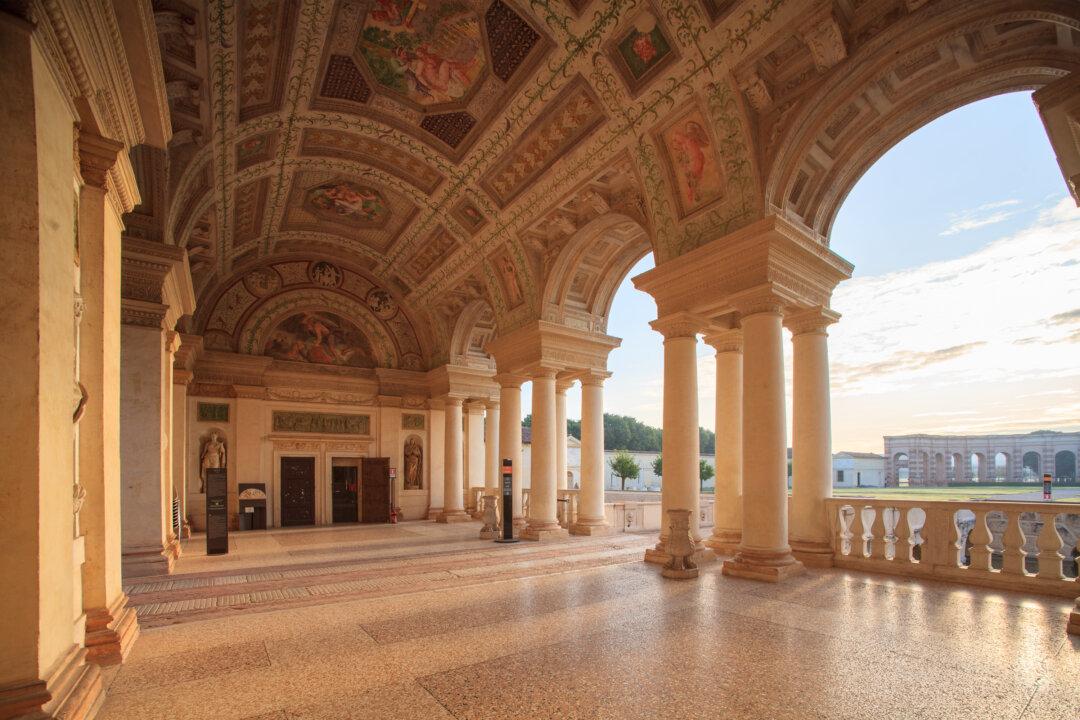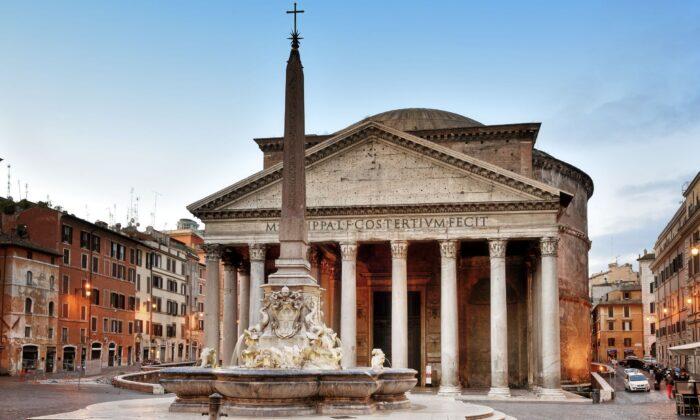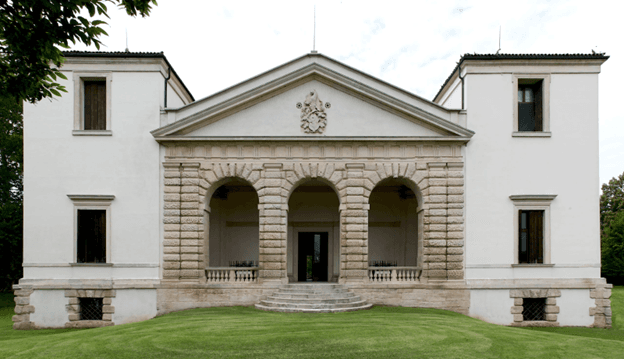Piazza del Duomo, Pisa (translated as Pisa Cathedral Square) was conceived in a time when Pisa held a dominant maritime position in the Mediterranean, boasting thriving trade and the largest navy in the sea. The piazza, or square, reflects the city’s flourishing wealth.
The four monuments—the cathedral, the baptistery, the campanile (bell tower), and the Camposanto Monumentale (monumental cemetery)—are made from white marble and provide a striking contrast to the sea of rich green grass surrounding them.
Many prominent cathedrals in Italy face a public square where neighboring buildings lie close by on three sides. The Piazza del Duomo instead presents these monuments in a broad, open space. They are on show, like fine sculptures in a sculpture garden of a museum.
One generally approaches and enters the piazza on foot and moves about the space on the defined paths, viewing the buildings from a distance. This spatial expanse and viewing arrangement slows down time and creates a dreamlike experience. This effect is heightened by the magnificent, large cathedral; the round, fortlike baptistery; and of course, the gravity-defying leaning tower.
The architectural styles of all four monuments of the piazza testify to the passage of the three centuries that it took to build the structures, from the 11th to the 14th centuries. The bold, round Romanesque arches are found on the lower levels; slenderer versions typically appear above them and act as a transition to the more finely detailed Gothic elements appearing on upper levels.
James Howard Smith, an architectural photographer, designer, and founder of Cartio, aims to inspire an appreciation of classic architecture.

The duomo, or cathedral, shows the diversity of Mediterranean cultures discovered through the many voyages that the Pisans undertook as part of their thriving maritime industry. photostock360/Shutterstock

The 11th-century Roman Catholic cathedral has a bright interior. Its columns were made from stone from conquered Muslim territories. Radiokafka/Shutterstock

The enormous depiction of Jesus, seemingly glowing above the altar, is made from thousands of small pieces of glass. This mosaic tradition originated in and shows influence from the Byzantine Empire in the Eastern Mediterranean. wjarek/Shutterstock

The Baptistery of St. John stands in front of the cathedral. The combination of the round Romanesque arches, the Gothic pointed arches, and the textured tile dome creates a uniquely exquisite treasure. Massimo Catarinella/CC BY-SA 3.0

The baptistery portal is ornamented with Byzantine-style details. The lower portion of the lintel (the beam above the door) reveals significant events in the life of St. John the Baptist, while the upper one shows Christ between the Madonna and St John the Baptist, with angels and the evangelists on either side. Kiev.Victor/Shutterstock

The circular form and structural arches inside the baptistery, while modestly detailed, create a dramatic effect. The acoustics of the lofty building create a spiritual ambience for musical performances often held there. Mstyslav Chernov/CC BY-SA 3.0

The Cathedral Square lies on a bed of sand and is the reason that the famous Romanesque tower leans. As the tower began leaning during construction, the builders compensated by having the upper floors counterbalance the tilt. Fedor Selivanov/Shutterstock

Made from white marble, the tower is estimated to weigh almost 16,000 tons. Upon completion of construction in 1319, the tower tilted 1 degree. It has leaned as much as 5.5 degrees but currently stands at an approximate 4-degree tilt after a restoration effort. Ventura/Shutterstock

The Camposanto Monumentale (monumental cemetery), shaped around an elongated courtyard, is lined with rhythmic Romanesque arches and is finely crafted with slender Gothic columns and pointed arches. Bernd Thaller/CC BY 2.0

The arcades extend the length of the courtyard and house numerous tombs. Frescoes on the walls depict spiritual themes from the Bible. Kiev.Victor/Shutterstock

The sculptures give prominence to a tomb in the cemetery, and remnants of frescoes appear on the walls. Patryk Kosmider/Shutterstock

Putti (cherubs) adorn a fountain that stands in front of the cathedral and greet guests upon their arrival at the main point in the square.Gabriele Maltinti/Shutterstock





